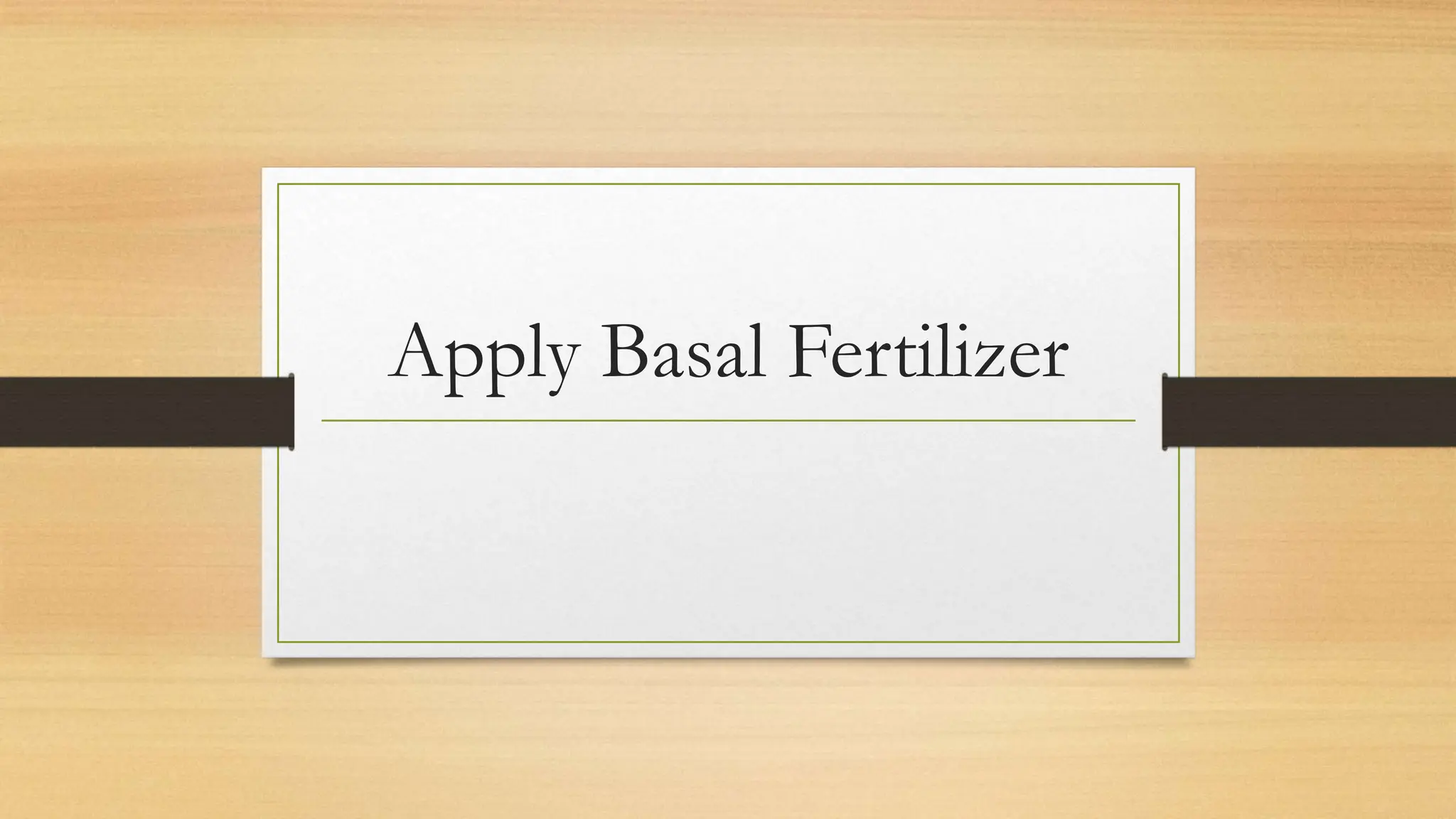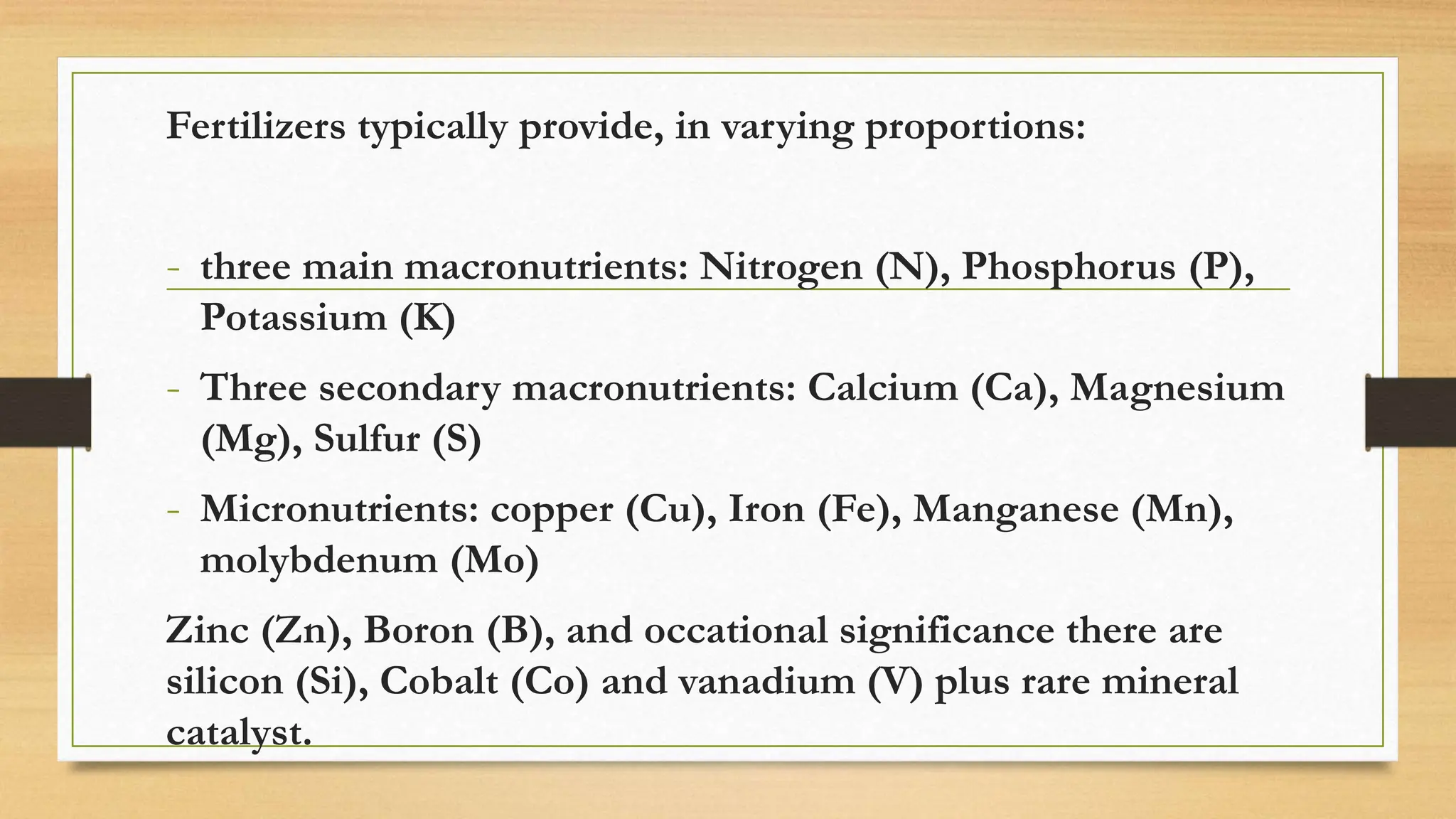- Basal fertilizer refers to the minimum amount of nutrients needed to sustain normal plant health. It is important to apply fertilizers at the right time, in the proper manner, and considering soil type and crop nutrient requirements.
- Fertilizers are typically applied to supply plants with macronutrients like nitrogen, phosphorus, and potassium as well as micronutrients. The time and method of application depends on the fertilizer type, soil type, and crop needs.
- Common organic fertilizers include manure and compost which improve soil health while inorganic fertilizers are more concentrated but can degrade soils over time if overapplied. Proper use and handling of fertilizers is necessary to provide optimal



















